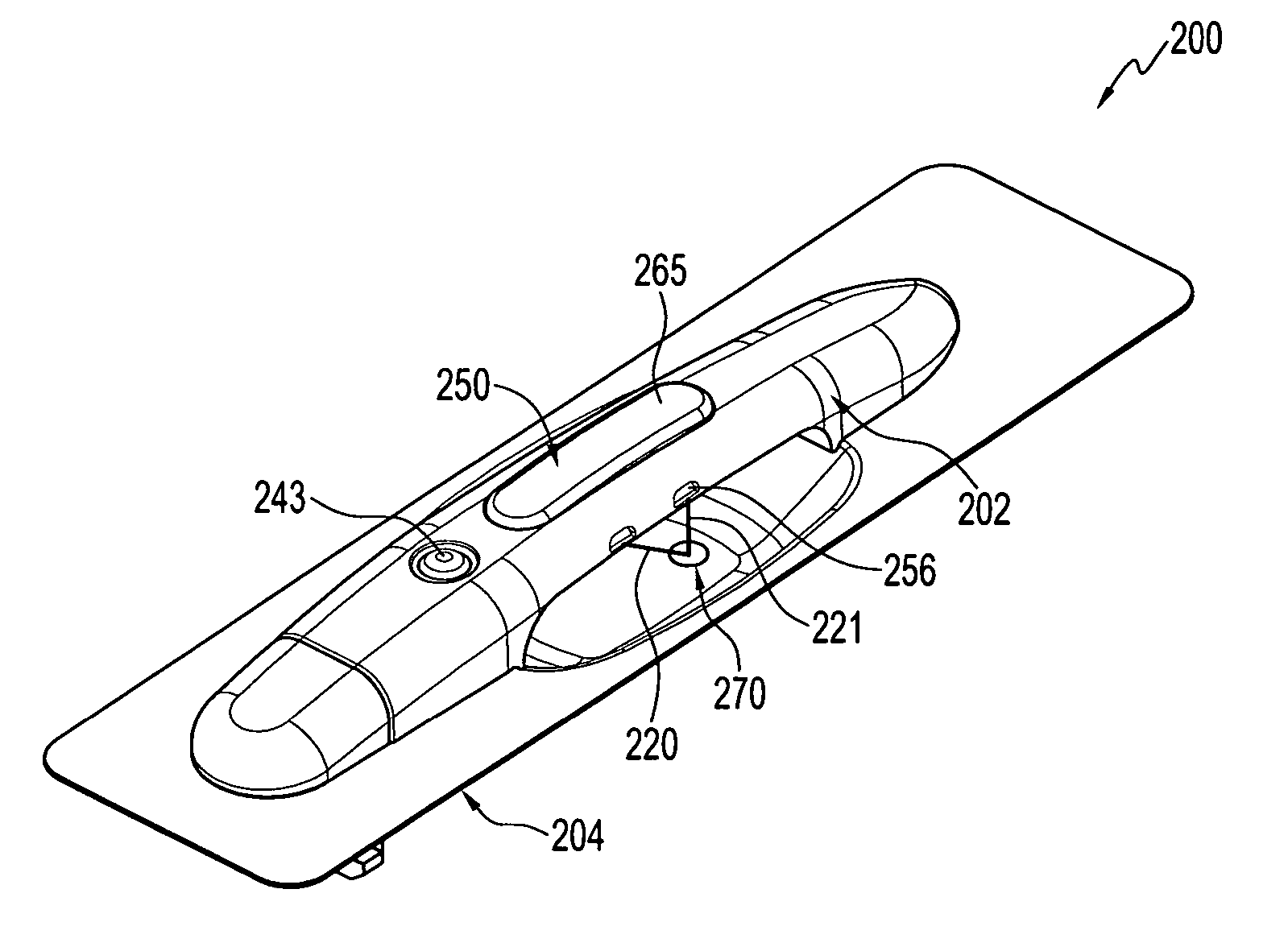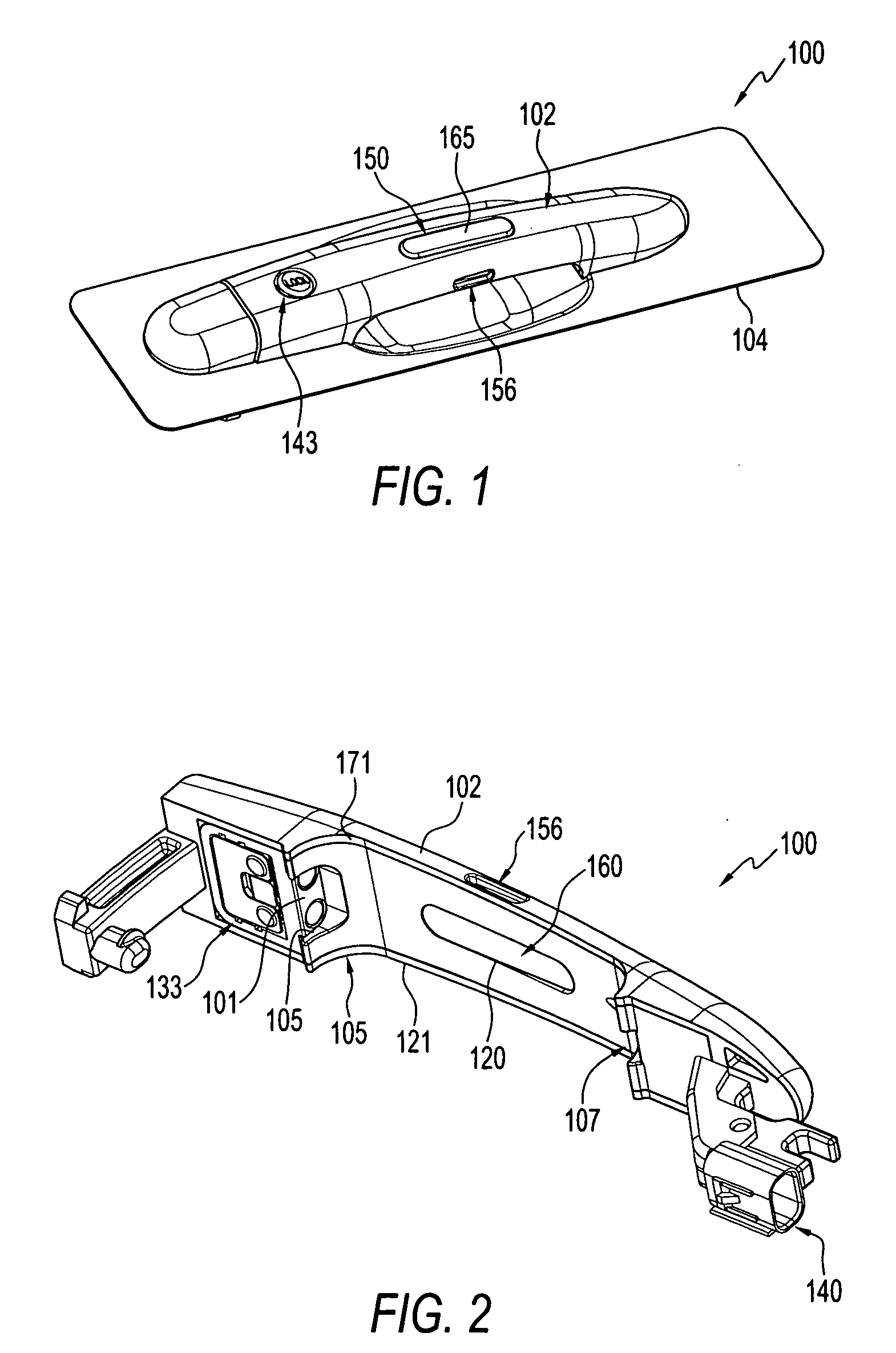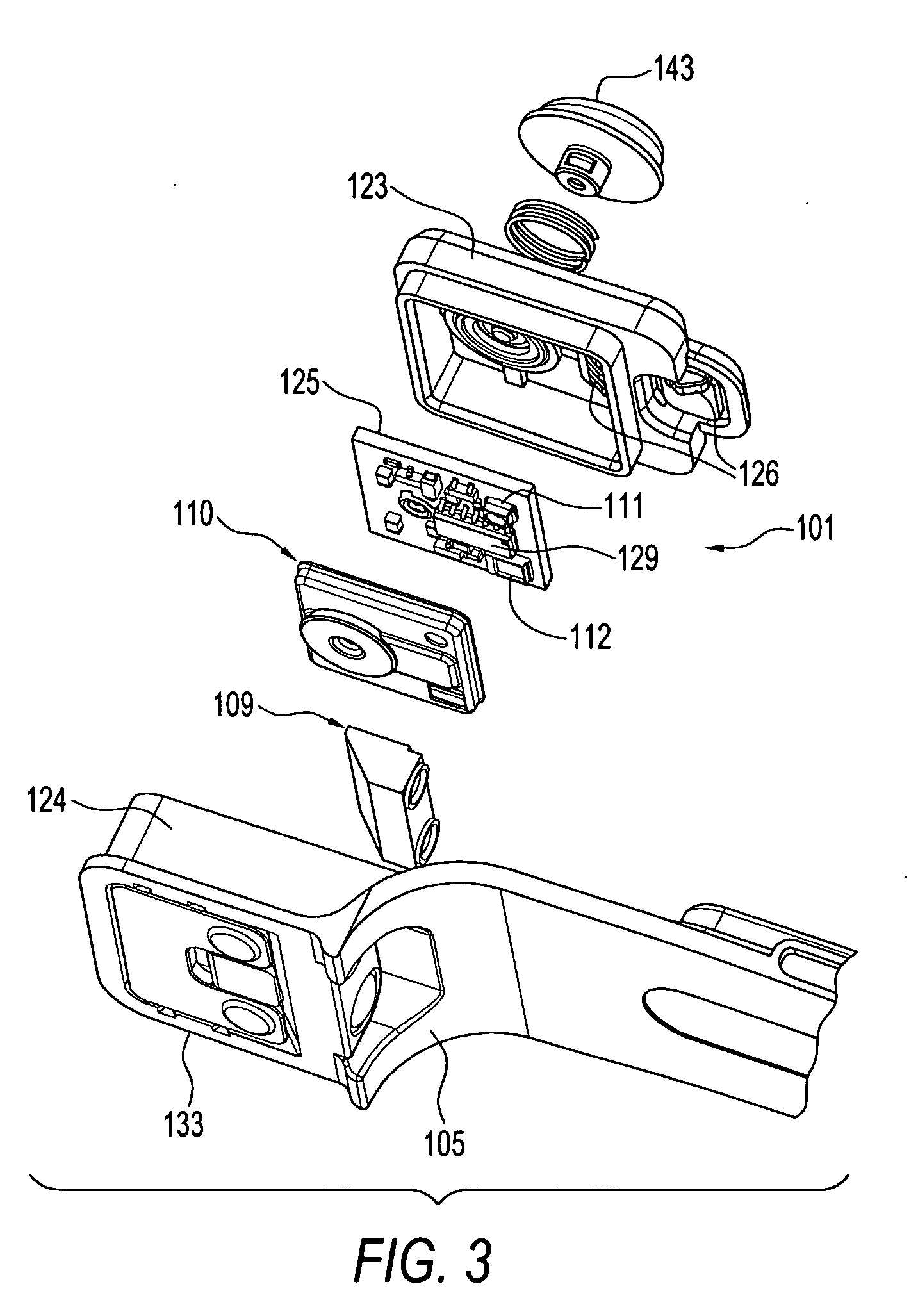Passive entry sensor system
a sensor system and passive entry technology, applied in the field of sensors and applications, can solve the problems of time-consuming and unergonomic, difficult to perform specific actions, and loss or damage of keys, and achieve the effect of rapid assembly of the system
- Summary
- Abstract
- Description
- Claims
- Application Information
AI Technical Summary
Benefits of technology
Problems solved by technology
Method used
Image
Examples
first embodiment
[0052] The method of operating the passive entry system arranged in a door handle of a vehicle will now be described with reference to FIGS. 1, 2, 5 and 6. Initially the vehicle door is locked and as the user begins to approach the vehicle, the control module 52, in response to a signal from an activity sensor, activates the back and ground light LEDs 158, 155, in the handle 102 to illuminate the ground and the door panel beneath the handle. The control module selectively activates the indicator LEDs 152 so that the handle locking button 143 and indicator lens 165 are illuminated red indicating to the user that the door is locked. When the user initially inserts his hand between the handle 102 and the door skin 105 to open the door, the beam is interrupted.
[0053] The signal processor circuitry 58 detects this interruption and interprets this as an authorized user wishing to open the door. The processor transmits a control signal to the control module 52 which then generates an RF s...
second embodiment
[0055] Reference will now be made to FIGS. 7, 8a and 8b, which illustrate various perspective views of a passive entry sensor system 200 arranged in a door handle according to a As will be described in more detail below, in this embodiment, the optical sensor 201 and indicator module 250 are combined together in a single plug-in unit 271 (shown in broken line in FIG. 8a) arranged about the centre of the handle such that the optical sensor can emit the beam 220 through the rear aperture of the handle 202 at an angle towards the door and detect the beam reflected by the reflector located on the door beneath the handle. The plug-in unit 271 is connected via a wire harness 260 to the connector 240 which connector can be left floating or insert molded into the end of the handle. Combining the indicator module and optical sensor in the plug-in unit 271 facilitates easy and rapid assembly of the sensor and indicator module in the handle without substantial modification of the handle.
[0056...
third embodiment
[0057] Another embodiment of the passive entry system arranged in a door handle assembly is illustrated in exploded view in FIG. 10. In this third embodiment, the optical enclosure of the sensor 301 is mounted in a bracket 370 which is fixed underneath the door skin 304 with the indicator module 350 remaining incorporated into the handle 302. A transparent polycarbonate molding with a front indicator window 365 and rear reflective area is located in a through aperture in the centre of the handle and serves as the optical enclosure of the indicator module.
[0058] The door skin 304 defines an aperture 380 which receives a lens protector assembly 390 through which the emitted beam is transmitted to the reflector (not shown) which is located on the underside of the handle 302. The beam is reflected back from the handle to the sensor. The indicator and back and ground light LEDs are operable by the control module in the same manner as those used in the first and second embodiments. Apertu...
PUM
 Login to View More
Login to View More Abstract
Description
Claims
Application Information
 Login to View More
Login to View More - R&D
- Intellectual Property
- Life Sciences
- Materials
- Tech Scout
- Unparalleled Data Quality
- Higher Quality Content
- 60% Fewer Hallucinations
Browse by: Latest US Patents, China's latest patents, Technical Efficacy Thesaurus, Application Domain, Technology Topic, Popular Technical Reports.
© 2025 PatSnap. All rights reserved.Legal|Privacy policy|Modern Slavery Act Transparency Statement|Sitemap|About US| Contact US: help@patsnap.com



